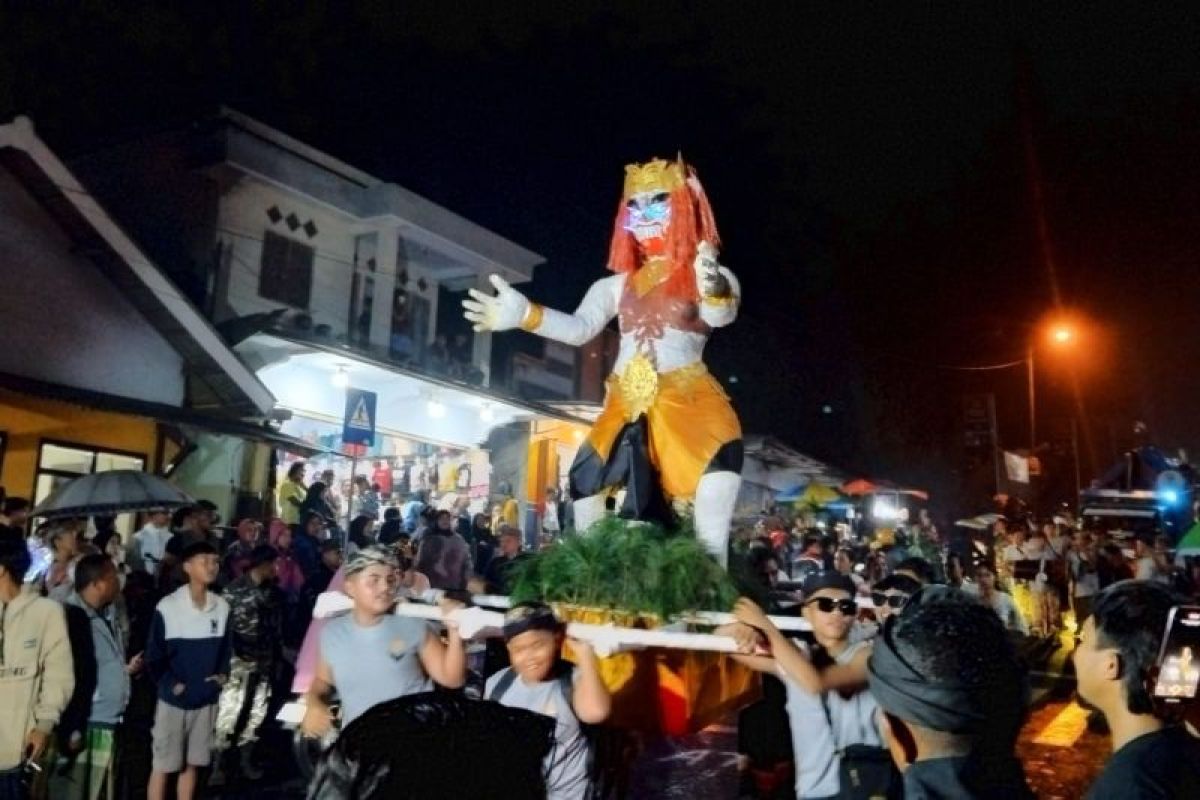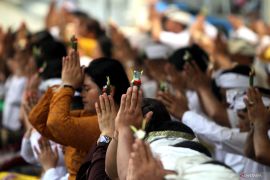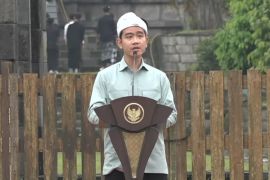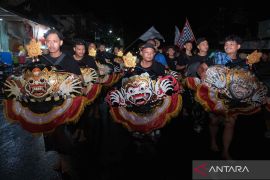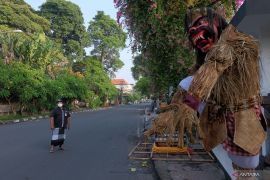The event attracted not only Hindus but also Muslims who participated in the festivities for Nyepi and the upcoming Eid al-Fitr, enhancing the celebratory spirit of the Ogoh-ogoh parade.
Each Ogoh-ogoh statue created was also the result of collaborative efforts among community members from various religious backgrounds.
The Ogoh-ogoh parade is held to drive away evil spirits," Budiono, the Head of Hindu Community Guidance at the Ministry of Religious Affairs' East Java Office, stated here on Saturday.
He noted that 17 Ogoh-ogoh statues were part of the procession, symbolizing Si Butha Kala, a being that disrupts human life. The parade aims to cleanse all negative energy from individuals.
"The ritual is intended to purify the environment from disasters, ensuring that the Nyepi celebration proceeds safely and peacefully. After the procession, these Ogoh-ogoh are burned to symbolize the destruction of evil spirits and cleansing," he stated.
Meanwhile, Wira Dharma, Chair of the Pura Mandhara Giri Semeru Agung Temple, elaborated that the burning of the Ogoh-ogoh is not merely an act but also carries significant meanings and aspirations for a world to once again be clean and free from disturbances caused by malevolent beings and spirits.
The Ogoh-ogoh parade held on Senduro Raya Street is an annual ceremony on the night before Nyepi and always draws thousands of residents in Senduro Village, Lumajang District.
The Ogoh-ogoh attractions and procession during the Tawur Agung Kesanga ceremony were accompanied by traditional music, with participants showcasing their performances, making the parade quite captivating and enhancing its festive nature.
Related news: Garuda Wisnu Kencana's kecak dance entertains tourists during holidays
Related news: Ministry expects UHN Bali to become model for education
Translator: Zumrotun, Kenzu
Editor: Azis Kurmala
Copyright © ANTARA 2025
